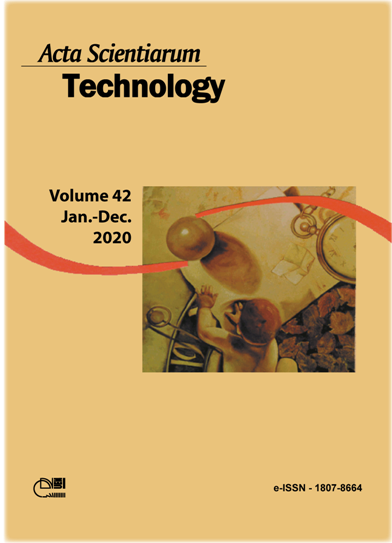Effect of lime on the mechanical response of a soil for use in unpaved forest roads
DOI:
https://doi.org/10.4025/actascitechnol.v42i1.44764Keywords:
stabilization; compaction; mechanical strength.Abstract
The main objective of this study was to propose the application of soil-lime mixtures asa primary coating layerof unpavedforestroads based on the premise that this layer can be considered mechanically similar to a flexible pavementsub base layer, aiming to fill a gap in the current technical literature and engineering practice in this field of knowledge. In the study, a laboratory test program was carried out in a residual gneiss soil encompassing: (i) geotechnical characterization tests; (ii) compaction tests at the standard Proctor energy on soil specimens and on soil-lime mixturespecimens prepared with lime contents of 2, 4 and 6% related to the dry soil mass; (iii) unconfined compressive strength tests on soil specimens compacted at the standard Proctor optimum parameters; and (iv) unconfined compressive strength tests on specimens of soil-lime mixtures compacted at the standard Proctor optimum compaction parameters with lime contents of 2, 4 and 6%, and cured at 22.8°C in the curing periods of 3, 7, 28 and 90 days. The results showed that the addition of lime resulted in: (i) reduction in soil maximum dry unit weight (gdmax) and increase in soil optimum water content (wopt);and(ii) significant gains in soil unconfined compressive strength that evidenced the expressive occurrence of pozzolanic reactions in the mixtures.Based on the hypothesis of a similar requirement for soil-cement and soil-lime mixtures, the tested soil-lime mixtures met the minimum mechanical strength (1.2MPa) required for application as a primary coating layer of unpaved forest roads.
Downloads
Downloads
Published
How to Cite
Issue
Section
License
DECLARATION OF ORIGINALITY AND COPYRIGHTS
I Declare that current article is original and has not been submitted for publication, in part or in whole, to any other national or international journal.
The copyrights belong exclusively to the authors. Published content is licensed under Creative Commons Attribution 4.0 (CC BY 4.0) guidelines, which allows sharing (copy and distribution of the material in any medium or format) and adaptation (remix, transform, and build upon the material) for any purpose, even commercially, under the terms of attribution.
Read this link for further information on how to use CC BY 4.0 properly.











8.png)




